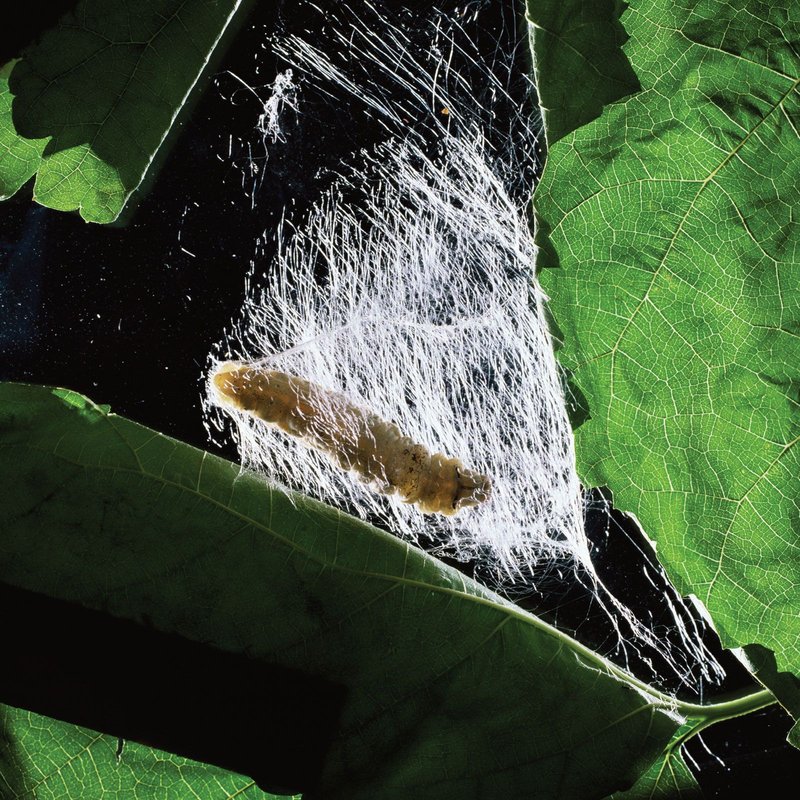
Think about how you react when you see movement from the corner of your eye or when the sun peeks through the clouds; you’re likely to turn your head or squint your eyes. It seems natural, right? But do silkworms, with their tiny brains and simple bodies, have similar reactions? In this blog, we’ll dive into the world of silkworms and explore their sensory perceptions. So grab your favorite drink, and let’s take a closer look at these remarkable little creatures.
Understanding Silkworms’ Senses
To appreciate whether silkworms recognize light and movement, we first need to understand how they experience the world. Silkworms belong to the species *Bombyx mori*, and like many insects, they rely on a mix of senses to navigate their environment. Their sensory organs might not be as complex as those of mammals, but they are perfectly adapted to their lifestyle.
Silkworms have simple eyes, known as ocelli, that are designed to detect light and darkness. While they don’t see the world in the same vibrant colors that we do, this ability to sense light helps them manage their activities, especially when it comes to feeding and spinning silk. They usually thrive in a controlled environment, which mimics their natural habitat, often with consistent lighting to promote growth and development.
Here’s the thing: light influences their behavioral patterns. For example, when exposed to light, silkworms might become more active, searching for food or interacting with each other. But they also have a built-in instinct to retreat to darker areas when threatened, showing that they can sense their surroundings and react accordingly.
The Role of Movement in Silkworm Behavior
Now let’s talk about movement. Silkworms may not sprint around like some other insects, but they have their own way of responding to motion. They are primarily herbivorous, eating mulberry leaves, and their movement is mostly limited to that crucial feeding process. But how do they respond to movement?
When something moves nearby, silkworms might not react in the way you’d expect. Instead of darting away, they tend to rely more on their sensory perception. Their sensitivity to vibrations in their environment can alert them to potential threats or changes nearby. This is similar to how we might feel a shudder or tremor and instantly know something is amiss.
Interestingly, when silkworms are disturbed, they may curl up into a ball. This is a defense mechanism designed to protect their soft bodies from potential predators. It’s a fascinating example of how their recognition of movement triggers an instinctual response, even if their reaction looks quite different from what you might see in a more complex animal.
Light Sensitivity and Growth Stages
Silkworms go through several stages of growth, known as instars, before they finally become cocoons and then moths. Each stage of their life involves different behaviors and reactions to light. For instance, during the larval stage, they are more active and primarily focused on eating, which means they favor well-lit areas that signal food availability.
The amount of light they receive can also affect their growth rate. For example, in optimal conditions, a silkworm exposed to sufficient light and warmth will grow faster and healthier compared to one kept in a dimly lit environment. This is where the relationship between light recognition and development becomes particularly interesting.
Strong light conditions can stimulate increased feeding, but it can also lead to stress if it’s too intense. Just like you might feel overwhelmed on a sunny day if you forgot your sunglasses, silkworms can be sensitive to excessive brightness. They tend to find comfort in shaded spots, indicating that their light recognition isn’t just about growth; it’s also about comfort and survival.
How Silkworms React to Environmental Changes
When it comes to environmental changes, silkworms don’t have the luxury of quickly moving to a new location like many other animals. Therefore, their ability to detect changes in light and movement becomes critically important. For example, if the lights in their habitat turn off suddenly, how do they react?
In such situations, silkworms will often become still. This reaction is instinctive; it’s a way of conserving energy while they assess their surroundings. In contrast, if the lights come back on or something moves nearby, they may resume their activities or huddle together for safety. This behavior shows that they’re not just passive creatures; they actively respond to stimuli in ways that support their survival.
Their perception of light can also be tied to their daily rhythms. Silkworms are typically more active during the day, feeding and spinning silk. However, when the sun sets, their activity levels drop significantly. This natural rhythm aids in their growth and development, emphasizing how light recognition plays a critical role in their lives.
Research on Silkworm Sensory Perception
Scientists have long been interested in how insects like silkworms perceive their environment. Various studies have indicated that these creatures have a remarkable ability to process sensory information, albeit in a simpler manner than mammals. Researchers have found that silkworms can differentiate between light intensities, which is crucial for their feeding habits.
One interesting study measured how silkworms responded to different light spectrums. By changing the light color and intensity, scientists observed variations in feeding behavior and movement. They found that specific wavelengths of light might encourage more activity and feeding, hinting at a complex relationship between insects and their sensory environment.
Here’s a fun fact: silkworms have been used in research beyond just silk production. Their simple sensory systems provide insights into insect behavior, genetics, and even the effects of environmental changes on living organisms. This ongoing research continues to reveal the importance of light and movement in their lives.
The Importance of Understanding Silkworm Behavior
So, why does it matter if silkworms can recognize light and movement? Well, understanding these behaviors is crucial, especially for those involved in sericulture—the practice of raising silkworms for silk production. Knowing how silkworms respond to their environment can lead to better rearing practices, ensuring healthier worms and higher quality silk.
Moreover, understanding silkworm behavior can also contribute to broader ecological knowledge. By studying these simple creatures, we can gain insights into how insects in general interact with their environments. This can inform conservation efforts and enhance our appreciation of biodiversity.
For anyone interested in keeping silkworms, whether as a hobbyist or for educational purposes, knowing their reactions can enhance the overall experience. By creating a suitable environment that mimics their natural conditions, you can witness these fascinating behaviors firsthand.
Silkworms may be small and seemingly simple creatures, but their ability to recognize light and movement is a complex and essential part of their lives. They navigate their world based on these perceptions, affecting their behavior, growth, and even survival. Whether you’re a budding enthusiast or simply curious about these wonderful insects, understanding how silkworms react to their environment can deepen your appreciation for their role in our world.
Next time you come across a silkworm, remember that they’re not just munching on leaves; they’re also sensing their surroundings in ways we can only begin to understand. So, whether you’re in the field of sericulture or just someone who finds joy in observing nature, there’s a lot to learn from these incredible little beings.

